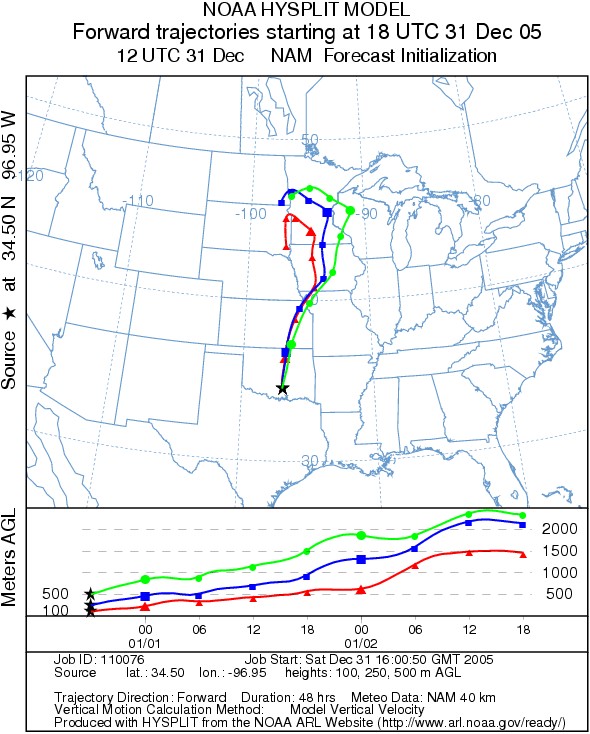The University of Tulsa
Mountain Cedar Pollen Forecast
Metropolitan Area |
Exposure Risk |
|
Oklahoma City |
Severe |
|
Tulsa |
Severe |
|
St. Louis MO |
Moderate |
Date Issued: 31 Dec 05
Mountain Cedar Location(s): Arbuckle Mountains, OK
Regional Weather:
Sat and Sun, Dec 31 and Jan 01. TX/OK:
The Texas/Oklahoma area will continue to be warm and dry today and tomorrow. A low pressure system will begin
to move off of the central Rockies on Sunday bringing increasing cloudiness to the north, but Texas will remain
relatively clear or with high clouds. Winds will remain quite strong over the weekend and shift from the predominant
southerly direction today to a more westerly flow on Sunday. Wind speeds will continue to be strong especially
towards the north. Humidity will remain low during the day with values in the 10-20% range in west rising towards
the east and north, but remaining near 40%. However overnight high humidity along the south and southeastern
edge of the Edwards Plateau may result in some precipitation, but only minor amounts at best. Similarly northeastern
Oklahoma shows a heightened chance of precipitation (20%) overnight. Temperatures throughout the region will remain
warm with highs in Oklahoma reaching the 70s and Texas showing highs in the upper 70s today and tomorrow. Nighttime
temperatures will remain above average for the time of year.
Trajectory weather: The air mass trajectories move from
the Arbuckle Mountains to the north over Oklahoma City, then continue into the upper Midwest. The trajectories
are associated with rising atmospheric conditions that are characteristically good for pollen entrainment and travel.
Warm daytime temperatures, clear skies and low relative humidity are excellent conditions for pollen release.
OUTLOOK: *** Moderate threat *** Severe
to Moderate threat *** Conditions are
very good for pollen release today, especially with high relative humidity at night. However, the severe drought
throughout the region has delayed the pollen season therefore the cones are only beginning to open. At this time
we do not have confirmation that the trees have started to pollinate, but have seen increased levels of atmospheric
pollen to the south along the eastern edge of the Edwards Plateau. Because pollination is only beginning, concentrations
should only pose a moderate threat to downwind communities from this population, but trajectories from Texas pass
over the region as well resulting in Severe threats from central to eastern Oklahoma. These include severe threats
from Oklahoma City to Tulsa and moderate threats further downwind in St. Lois MO, especially if the wind trajectories
are pushed slightly north along their path.
Trajectory Start (s) (shown by black
star on map): Sulfur, OK.

Prepared by: Estelle
Levetin (Faculty of Biological
Science, The University
of Tulsa, 600 S. College, Tulsa, OK 74104) in conjunction with Peter K Van de Water. This forecast
gives the anticipated future track of released Mountain Cedar pollen, weather conditions over the region and along
the forecast pathway, and an estimated time of arrival for various metropolitan areas.
Questions: Aerobiology Lab e-mail: pollen@utulsa.edu
Return to Forecasting Home Page